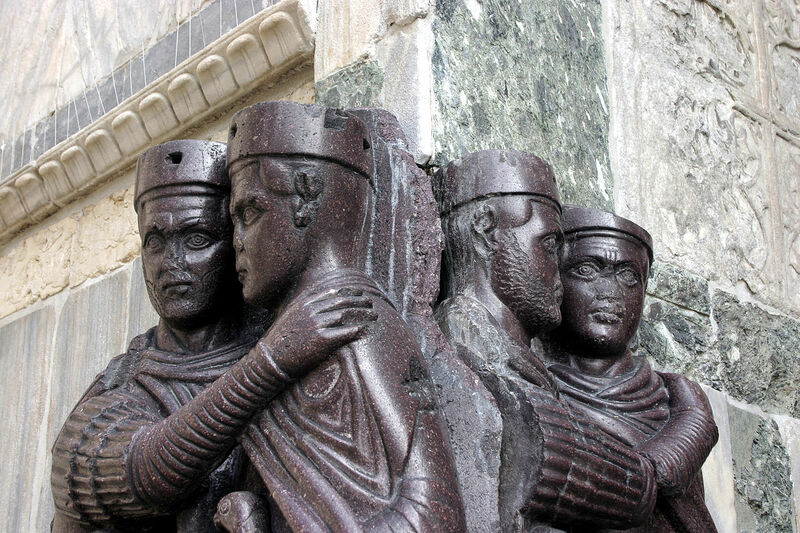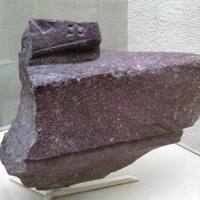Porphyry Tetrarchs
Type:
Sculptures
Date:
ca. 300
Medium:
Porphyry
Dimensions:
Height of 130 cm
Description:
Figural groups representing the four Tetrarchs, the junior and senior emperor pairs who ruled the Roman world in the decades before Constantine reestablished sole rule, were displayed along the city's main ceremonial avenue (they may have been thought to represent Constantine's sons). These porphyry tetrarch pairs are now at the Vatican and in Venice. The latter were taken from Constantinople after the Fourth Crusade (1204) and installed at the corner of the San Marco Cathedral, but the foot of one tetrarch remained in Constantinople (its white marble replacement in Venice is very visible).
Porphyry is a very hard reddish-purple stone that contains feldspar crystals in the form of white spots. It was quarried only at Mons Porphyritis (Porphyry Mountain) in Egypt's Eastern Desert, between the Nile River and the Red Sea. Its extraction and dispersal was a monopoly controlled by the Roman emperors, and vast quantities of porphyry were shipped to Rome and around the Mediterranean between the first and fourth centuries CE. The quarries were closed by the fifth century, and all later porphyry sculpture and architectural components—columns, revetment slabs, sculpture—had to be acquired from older pieces, either culled from warehoused stockpiles or stripped from their original context as spolia. Because of its rarity, durability, and imperial associations, porphyry and its purplish color was highly prized throughout the Middle Ages.
Porphyry is a very hard reddish-purple stone that contains feldspar crystals in the form of white spots. It was quarried only at Mons Porphyritis (Porphyry Mountain) in Egypt's Eastern Desert, between the Nile River and the Red Sea. Its extraction and dispersal was a monopoly controlled by the Roman emperors, and vast quantities of porphyry were shipped to Rome and around the Mediterranean between the first and fourth centuries CE. The quarries were closed by the fifth century, and all later porphyry sculpture and architectural components—columns, revetment slabs, sculpture—had to be acquired from older pieces, either culled from warehoused stockpiles or stripped from their original context as spolia. Because of its rarity, durability, and imperial associations, porphyry and its purplish color was highly prized throughout the Middle Ages.
Relevant Textbook Chapter(s):
1
Image Credits:
Wikimedia Commons



